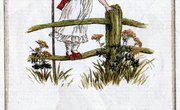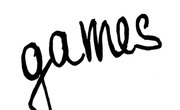Memorizing spelling words can get tiresome, but by creating a simple board game, you can encourage your students to use what they know to win the game and cement their knowledge. By allowing them to apply their knowledge in fun and creative ways such as this, you can reinforce their learning in the classroom or at home. Reuse this concept for any subject matter, replacing the spelling words with vocabulary words, test questions or even math problems.
Build the Board
Draw a square labeled "START" in one corner of a piece of paper.
Draw a square labeled "FINISH" in the opposite corner of the paper.
Draw a line of winding squares connecting the "Start" and "End" points.
Write "Move ahead 2 spaces." on five squares throughout the board.
Write "Lose a turn." on two squares throughout the board.
Create the Cards
Cut the remaining two sheets of paper into 2-by-1-inch cards.
Write one spelling word on each card.
Shuffle the cards and set upside down next to the board.
Play the Game
Choose two players.
Player One pulls a card and reads the word to Player Two. Player Two spells the word. If the word is spelled correctly, Player Two moves forward one space. If the word is not spelled correctly, Player Two does not move. The card is placed at the bottom of the pile.
Player Two pulls a card and reads the word to Player One. Player One spells the word. If the word is spelled correctly, Player One moves forward one space. If the word is not spelled correctly, Player One does not move. The card is placed at the bottom of the pile.
Continue play until one player reaches the end and wins the game. If a player lands on "Lose a turn," that player does not get a chance to spell a word until the next round. If a player lands on "Move ahead 2 spaces," that player moves forward two additional spaces without waiting for the next round.
Tip
For younger children, allow them to participate in making the game by coloring the board and decorating the backs of the cards. For older children, allow them to add their own special squares and make up their own rules, such as moving backwards a space for every letter they get wrong in the word.
Tip
If children are having an especially hard time spelling the words, take a time out and review the spelling list with them. Point out specific spelling patterns such as consonant blends and silent letters. If they still have difficulty, incorporate hints and mnemonic devices into the game play.
Related Articles
References
Tips
- For younger children, allow them to participate in making the game by coloring the board and decorating the backs of the cards. For older children, allow them to add their own special squares and make up their own rules, such as moving backwards a space for every letter they get wrong in the word.
- If children are having an especially hard time spelling the words, take a time out and review the spelling list with them. Point out specific spelling patterns such as consonant blends and silent letters. If they still have difficulty, incorporate hints and mnemonic devices into the game play.
Writer Bio
Amanda Gebhardt began writing professionally in 2006. She has written for Trails and eHow, focusing on a variety of topics, including travel, policy, language and education. She is a professional editor and is finishing her Master of Fine Arts in creative writing from Northwestern University.











